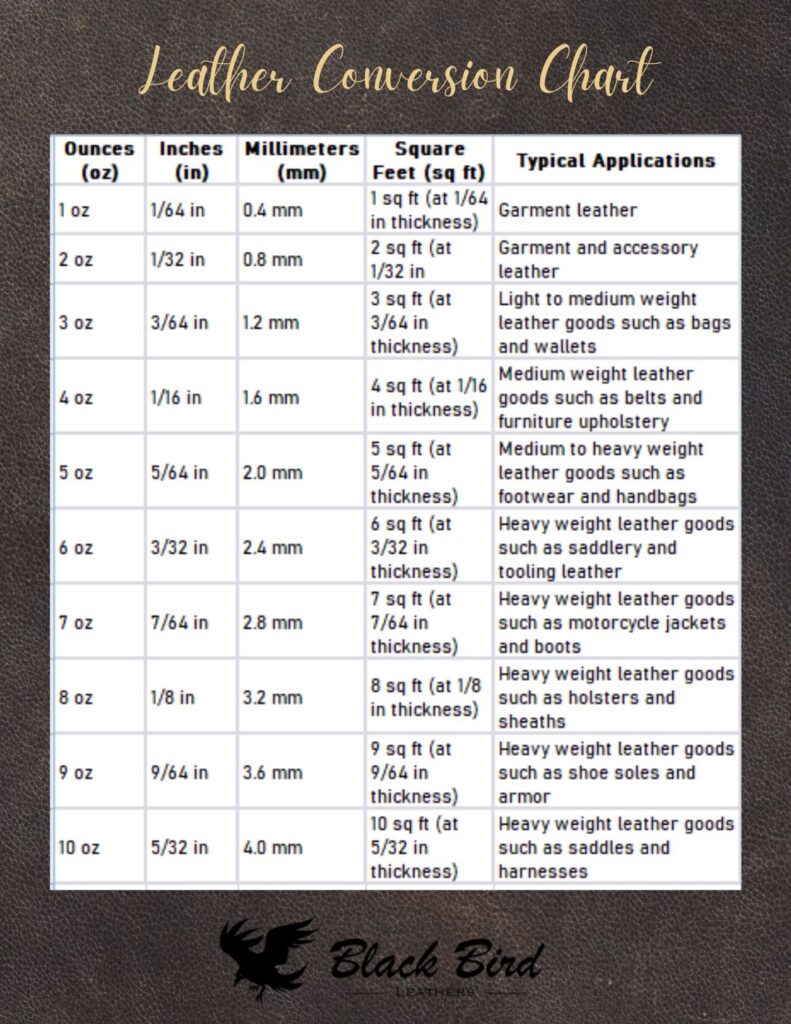Leather is a highly valued and versatile material used in a wide range of industries, including fashion, furniture, automotive, and sports equipment. The United States is one of the largest producers and consumers of leather products in the world. The leather prices in the USA are influenced by various factors, such as raw material costs, supply and demand dynamics, labor costs, and government policies.
In recent years, the leather industry has faced numerous challenges, including rising competition from synthetic materials, concerns over animal welfare and sustainability, and the impact of the COVID-19 pandemic on global supply chains. These factors have had a significant impact on the price of leather, which has fluctuated considerably in the past few years. As a result, buyers and sellers of leather products must keep a close eye on market trends and price fluctuations to make informed decisions about purchasing, selling, or investing in leather products.
In this article, we will explore the factors that affect the prices of different leathers and the overall leather industry in the USA. We will look at the impact of supply and demand, production costs, and other economic and environmental factors on leather prices. Additionally, we will delve into the various types of leather available, including cowhide, sheepskin, and exotic leathers like alligator and ostrich. So, Let’s start without any further duo!
Leather Industry in the USA


The USA is a leading producer of leather products, with a history dating back to the colonial era. The industry has evolved over the years, incorporating new technologies and materials to produce high-quality leather products. The leather industry in the USA contributes significantly to the economy and brings in milliards of dollars every year.
States like Wisconsin, Pennsylvania, and New York are important producers of leather and leather items in the USA, with the leather industry being predominantly based in the Midwest and Northeast regions. These states have a long history in the leather business and are the location of numerous reputable businesses and producers.
The US leather industry encompasses a wide range of products, including apparel, footwear, furniture, automobile interiors, and accessories. The market is dominated by large companies such as Coach, Michael Kors, and Kate Spade, which specialize in high-end leather goods. Overall, the leather industry in the USA is expected to continue to grow, driven by the increasing demand for luxury goods and the rising popularity of e-commerce.
Statista
- Revenue in the Luxury Leather Goods segment amounts to US$18.85bn in 2023. The market is expected to grow annually by 2.83% (CAGR 2023-2028)
- In global comparison, most revenue is generated in the United States (US$18,850.00m in 2023)
- In relation to total population figures, per-person revenues of US$55.98 are generated in 2023
Factors Influencing Leather Prices
The prices of leather products in the USA are influenced by various factors including:
Animal Type
The hides of many animals, including cows, goats, sheep, pigs, and even exotic animals like alligators and snakes, can be used to make leather. Depending on the animal from which it is sourced, the price of leather will vary. Certain animals produce hides that are more expensive due to their scarcity or the special characteristics of their hides. For instance, due to their rarity and distinctive texture, alligator, and crocodile leather are some of the priciest leathers available.
Quality of Hides
A key additional factor that affects leather prices is the quality of the hide. Better-grade hides will be more expensive than lower-quality hides with more deformities since they have fewer blemishes and imperfections. Depending on the region, several grading systems are used to categorize hides, but in general, hides are ranked according to their size, thickness, and quality.
Tanning Process
The technique of tanning used to turn hides into leather can also affect how much leather costs. The most popular type of tanning is chrome tanning, which is quicker and less expensive than alternative processes like vegetable tanning. Yet, due to its durability and natural appearance, some customers like leather that have been vegetable-tanned.
The texture and color of the leather can be affected by the tanning process, which can also affect its cost. Environmental regulations can impact the cost of leather production. The use of certain chemicals in tanning and processing leather may be restricted or prohibited, and leather manufacturers may need to invest in new equipment or processes to comply with regulations.
Supply Chain
The leather supply chain includes several phases, including production, distribution, and tanning. There are expenses related to each stage, such as the price of labor, raw materials, and transportation. Any supply-chain hiccups, like a lack of raw materials or a hold-up in delivery, can raise the cost of leather.
Market Demand
Leather prices are significantly influenced by the demand for leather goods. Leather prices generally rise when there is a high demand for leather goods. Fashion trends, consumer tastes, and the status of the economy are just a few examples of factors that may have an impact on this.
Labor Costs
The price of leather is significantly influenced by labor expenditures. Depending on the country of production and the worker’s skill level, the cost of labor might vary significantly. The cost of leather can be affected by any adjustments to labor costs, such as increases in the minimum wage.
Leather Weights And Measurements in the USA


In the USA, leather weights and measurements are typically measured in ounces and square feet.
Leather Thickness – The weight of a piece of leather is measured in ounces. A single ounce is equivalent to 0.4 millimeters or 1/64 of an inch. Thus, a 4-ounce piece of leather would measure around 1/16th of an inch or 1.6 millimeters thick.
Leather Weight – The term “leather weight” describes the weight of a specific area of the leather, typically expressed in ounces per square foot. Depending on the leather’s nature and use, this weight may change. Lightweight leather, for clothing, would weigh 2-4 ounces per square foot, whereas hefty leather, for furniture, might weigh 8–10 ounces per square foot.
Estimated Minimum Prices of Different Types of Leather Per Square Feet and Ounces in the USA
| Leather Type | Quality | Characteristics | Estimated Minimum Price per Square Foot | Estimated Minimum Price per Ounce |
|---|---|---|---|---|
| Cowhide (chrome-tanned) | Average | Soft, flexible, and smooth texture | $4 – $8 | $0.16 – $0.32 |
| Cowhide (vegetable-tanned) | High | Stiff, durable, and environmentally-friendly | $6 – $12 | $0.24 – $0.48 |
| Full Grain Leather | Highest | Natural look and feel, durable, resistant to wear and tear | $8 – $16 | $0.32 – $0.64 |
| Top Grain Leather | High | Smooth and uniform appearance, slightly less durable | $6 – $12 | $0.24 – $0.48 |
| Suede Leather | Average | Soft and fuzzy texture, less durable than other types | $2 – $6 | $0.08 – $0.24 |
| Patent Leather | High | GlGlossyinish, commonly used in high-end fashion | $10 – $20 | $0.40 – $0.80 |
| Exotic Leather | Highest | Rarity and difficulty to produce, commonly used in high-end fashion | $50 – $200 | $2.00 – $8.00 |
Estimated Minimum Prices of Different Types of Animal Hides Per Square Feet and Ounces in the USA
| Type of Animal Hide | Estimated Minimum Price per Square Foot | Estimated Minimum Price per Ounce | Characteristics |
|---|---|---|---|
| Cowhide | $3-$10 | $0.15-$0.50 | Durable, versatile, and available in a wide range of colors and finishes |
| Goatskin | $5-$15 | $0.25-$0.75 | Soft, supple, lightweight, often used for gloves, jackets, and other apparel |
| Sheepskin | $3-$8 | $0.15-$0.40 | Soft, warm, lightweight, commonly used for clothing, footwear, and accessories |
| Pigskin | $2-$5 | $0.10-$0.25 | Durable, flexible, often used for gloves, jackets, and footwear |
| Deer hide | $10-$20 | $0.50-$1.00 | Soft, strong, lightweight, commonly used for gloves, jackets, and footwear |
| Alligator | $40-$100 | $2.00-$5.00 | Unique texture and appearance, high-end luxury material used for accessories and footwear |
| Ostrich | $30-$60 | $1.50-$3.00 | Soft, lightweight, distinctive quill pattern, commonly used for boots and accessories |
| Snake | $20-$50 | $1.00-$2.50 | Lightweight, distinctive texture and pattern, commonly used for boots and accessories |
Note: It is important to note that these prices are estimates and can vary depending on the quality, supplier, and market conditions.
Final Thoughts
In conclusion, the leather industry in the USA is a significant part of the economy, with a diverse range of products used in various applications. The price of leather can fluctuate depending on a range of factors, including supply and demand, raw material costs, and market trends. It is worth noting that the USA is one of the largest consumers and producers of leather in the world, with a strong focus on quality and sustainability.
As such, there is a growing demand for high-quality leather products that are ethically sourced and produced. Staying informed about the factors that influence leather prices can help businesses and consumers make informed decisions when it comes to buying and selling leather goods. Overall, the leather industry in the USA is expected to continue to thrive in the coming years, driven by consumer demand for high-quality products and a focus on sustainability and ethical production practices.

